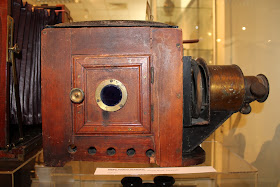 According to an advert in his 'History of Dungarvan' the business was established in 1875 at 17 Main Street. He probably started doing photography in the 1880's as a part time activity. He advertised his photographic studio 'now open' in the Munster Express on 1st February 1896. His main business at the end of the 19th century consisted of a news agency, stationers and auctioneers. Much of his work was in portraiture but in his spare time he photographed Dungarvan's streets and buildings and set off on his bike to photograph the surrounding countryside. He also did documentary work recording events as they happened.
According to an advert in his 'History of Dungarvan' the business was established in 1875 at 17 Main Street. He probably started doing photography in the 1880's as a part time activity. He advertised his photographic studio 'now open' in the Munster Express on 1st February 1896. His main business at the end of the 19th century consisted of a news agency, stationers and auctioneers. Much of his work was in portraiture but in his spare time he photographed Dungarvan's streets and buildings and set off on his bike to photograph the surrounding countryside. He also did documentary work recording events as they happened.He published a number of books including an album of views of Dungarvan and district, a booklet on Abbeyside Castle 'Abbeyside Castle (Historical & Descriptive Sketch)' 1916, printed by the Waterford News.
He had a great interest in local history and wrote the first history of Dungarvan in 1924: 'Illustrated History of Dungarvan', Waterford News, 1924. An original first copy of the book is on display in the museum at present. It has much useful information especially on the 'Troubles' and many interesting photos. He also produced a number of postcards of local views and events.




